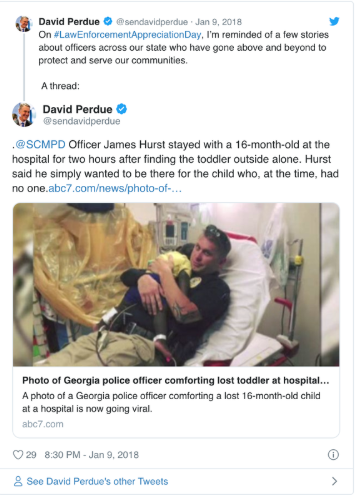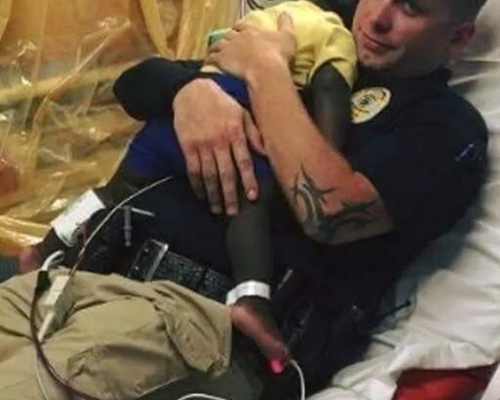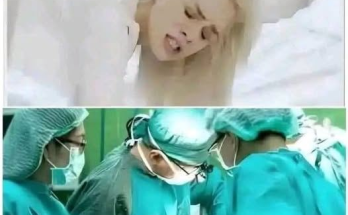The boy was incredibly small, barely able to fully wrap his tiny, fragile arms around the hospital blanket that was meant to provide him warmth and comfort. His voice, soft and trembling, broke repeatedly as uncontrollable sobs escaped from deep within him, filling the otherwise sterile and quiet hospital room. The bright, unforgiving fluorescent lights overhead cast stark shadows across the white walls, reflecting off the polished floors and adding to the cold, impersonal atmosphere. Around him, unfamiliar machines beeped rhythmically and occasionally hummed, their sounds strange and intimidating to someone so young.
The constant movement of nurses and doctors in their scrubs, the whispered conversations, and the sterile scent of antiseptics created a world that was overwhelming, frightening, and isolating. At such a tender age, the world feels enormous—every noise feels amplified, every face foreign and potentially threatening, and every change in routine can unsettle a child’s fragile sense of safety. The hospital, a place designed to heal and comfort, sometimes inadvertently causes distress, especially for infants who cannot understand the reasons for their discomfort or pain. For this little boy, the environment was too much. His distress was immediate and profound. His tiny chest rose and fell unevenly as he sobbed uncontrollably, tears streaming down his cheeks faster than the nurses could gently dab them away with soft cloths.
Standing quietly nearby, an officer watched this heartbreaking scene unfold with growing concern. Years of rigorous training had prepared him for emergencies, threats, and crises, but nothing in his career had prepared him for the gut-wrenching sound of a child’s sorrow. The officer’s heart softened as he observed the boy’s vulnerability and helplessness. A deep, instinctive urge to provide comfort and protection surged within him—a call not of duty or protocol but of simple, raw humanity.
Without hesitation, the officer stepped forward, his voice calm but filled with genuine empathy. “Can I hold him?” he asked the medical staff, the question simple but heavy with meaning. The hospital staff, recognizing the officer’s sincerity and understanding the child’s acute distress, immediately consented. In that instant, the trappings of authority—the shining badge, the heavy belt, the tactical gear—seemed to melt away. The officer was no longer a figure enforcing laws and order; he was simply a human being reaching out to another human being in need of comfort.

Gently, with the care of someone who understood the fragility of life, the officer lifted the boy into his arms. Almost immediately, the child’s desperate crying began to ebb. His sobs slowed to soft whimpers, then quiet breaths. His tiny head nestled against the officer’s chest, seeking solace in the steady, reassuring beat of a heartbeat he could trust. The officer could feel the slight trembling of the boy’s body as it gradually relaxed in his embrace.
Conscious of the weight and bulk of his body armor and equipment, which made it difficult to hold the boy comfortably for long, the officer carefully sat down on the edge of the hospital bed. Cradling the child securely, he rocked him gently, providing a safe harbor amidst the storm of unfamiliar sensations and emotions the boy was experiencing. Reflecting on the moment later, the officer shared, “I just knew this child needed someone to be there for him. It wasn’t about my job, or my training—it was something deeper. It was human instinct. Pure, simple humanity.”
Witnesses to this tender moment saw beyond the uniform and badge; they saw compassion, kindness, and a profound tenderness that often goes unnoticed. In a world frequently dominated by headlines about conflict and tragedy, this moment was a quiet but powerful reminder that sometimes the greatest act of protection isn’t fighting off danger, but simply being a steady and safe presence for someone vulnerable and scared.
In that small hospital room, surrounded by the hum of machines and the flickering of lights, the boy’s fear slowly dissolved, replaced by the comforting rhythm of a heartbeat that he could trust. Through this act of simple kindness, the officer demonstrated that true strength often lies not in authority or power, but in the ability to offer care and solace when it is most desperately needed.
This moment also revealed the often unseen side of those who wear uniforms: beneath the badges and tactical gear are individuals with hearts capable of great empathy and compassion. It was a reminder that humanity is at the core of every act of service, and sometimes, the smallest gestures—like holding a crying child—can have the greatest impact.
In the days that followed, stories of this encounter spread quietly among the hospital staff and community, serving as a beacon of hope and kindness in difficult times. The boy, now safe and calm, continued to heal, supported not only by medical care but by the memory of the officer’s compassionate embrace.
This story remains a testament to the power of human connection—how one simple act of kindness, born from instinct and compassion, can transform fear into comfort, loneliness into safety, and despair into hope. It’s a reminder that in the most unexpected moments, the truest strength is found in our ability to care for one another.
The boy was incredibly small, barely able to fully wrap his tiny, fragile arms around the hospital blanket that was meant to provide him warmth and comfort. His voice, soft and trembling, broke repeatedly as uncontrollable sobs escaped from deep within him, filling the otherwise sterile and quiet hospital room. The bright, unforgiving fluorescent lights overhead cast stark shadows across the white walls, reflecting off the polished floors and adding to the cold, impersonal atmosphere. Around him, unfamiliar machines beeped rhythmically and occasionally hummed, their sounds strange and intimidating to someone so young.
The constant movement of nurses and doctors in their scrubs, the whispered conversations, and the sterile scent of antiseptics created a world that was overwhelming, frightening, and isolating. At such a tender age, the world feels enormous—every noise feels amplified, every face foreign and potentially threatening, and every change in routine can unsettle a child’s fragile sense of safety. The hospital, a place designed to heal and comfort, sometimes inadvertently causes distress, especially for infants who cannot understand the reasons for their discomfort or pain. For this little boy, the environment was too much. His distress was immediate and profound. His tiny chest rose and fell unevenly as he sobbed uncontrollably, tears streaming down his cheeks faster than the nurses could gently dab them away with soft cloths.
Standing quietly nearby, an officer watched this heartbreaking scene unfold with growing concern. Years of rigorous training had prepared him for emergencies, threats, and crises, but nothing in his career had prepared him for the gut-wrenching sound of a child’s sorrow. The officer’s heart softened as he observed the boy’s vulnerability and helplessness. A deep, instinctive urge to provide comfort and protection surged within him—a call not of duty or protocol but of simple, raw humanity.
Without hesitation, the officer stepped forward, his voice calm but filled with genuine empathy. “Can I hold him?” he asked the medical staff, the question simple but heavy with meaning. The hospital staff, recognizing the officer’s sincerity and understanding the child’s acute distress, immediately consented. In that instant, the trappings of authority—the shining badge, the heavy belt, the tactical gear—seemed to melt away. The officer was no longer a figure enforcing laws and order; he was simply a human being reaching out to another human being in need of comfort.

Gently, with the care of someone who understood the fragility of life, the officer lifted the boy into his arms. Almost immediately, the child’s desperate crying began to ebb. His sobs slowed to soft whimpers, then quiet breaths. His tiny head nestled against the officer’s chest, seeking solace in the steady, reassuring beat of a heartbeat he could trust. The officer could feel the slight trembling of the boy’s body as it gradually relaxed in his embrace.
Conscious of the weight and bulk of his body armor and equipment, which made it difficult to hold the boy comfortably for long, the officer carefully sat down on the edge of the hospital bed. Cradling the child securely, he rocked him gently, providing a safe harbor amidst the storm of unfamiliar sensations and emotions the boy was experiencing. Reflecting on the moment later, the officer shared, “I just knew this child needed someone to be there for him. It wasn’t about my job, or my training—it was something deeper. It was human instinct. Pure, simple humanity.”
Witnesses to this tender moment saw beyond the uniform and badge; they saw compassion, kindness, and a profound tenderness that often goes unnoticed. In a world frequently dominated by headlines about conflict and tragedy, this moment was a quiet but powerful reminder that sometimes the greatest act of protection isn’t fighting off danger, but simply being a steady and safe presence for someone vulnerable and scared.
In that small hospital room, surrounded by the hum of machines and the flickering of lights, the boy’s fear slowly dissolved, replaced by the comforting rhythm of a heartbeat that he could trust. Through this act of simple kindness, the officer demonstrated that true strength often lies not in authority or power, but in the ability to offer care and solace when it is most desperately needed.
This moment also revealed the often unseen side of those who wear uniforms: beneath the badges and tactical gear are individuals with hearts capable of great empathy and compassion. It was a reminder that humanity is at the core of every act of service, and sometimes, the smallest gestures—like holding a crying child—can have the greatest impact.
In the days that followed, stories of this encounter spread quietly among the hospital staff and community, serving as a beacon of hope and kindness in difficult times. The boy, now safe and calm, continued to heal, supported not only by medical care but by the memory of the officer’s compassionate embrace.
This story remains a testament to the power of human connection—how one simple act of kindness, born from instinct and compassion, can transform fear into comfort, loneliness into safety, and despair into hope. It’s a reminder that in the most unexpected moments, the truest strength is found in our ability to care for one another.




